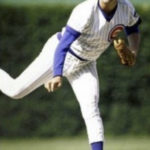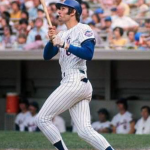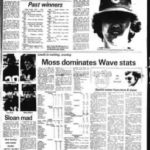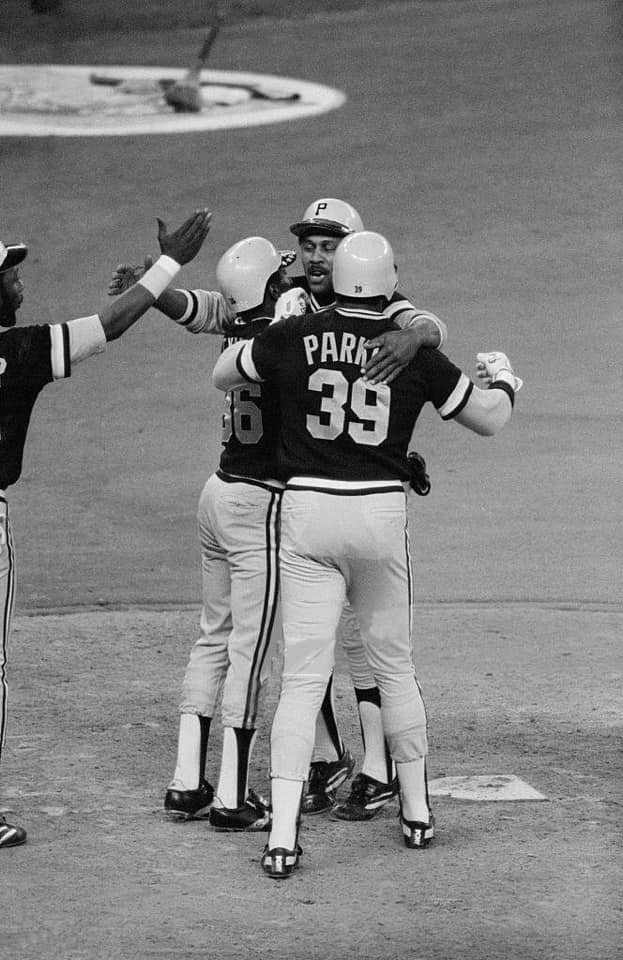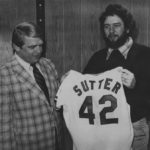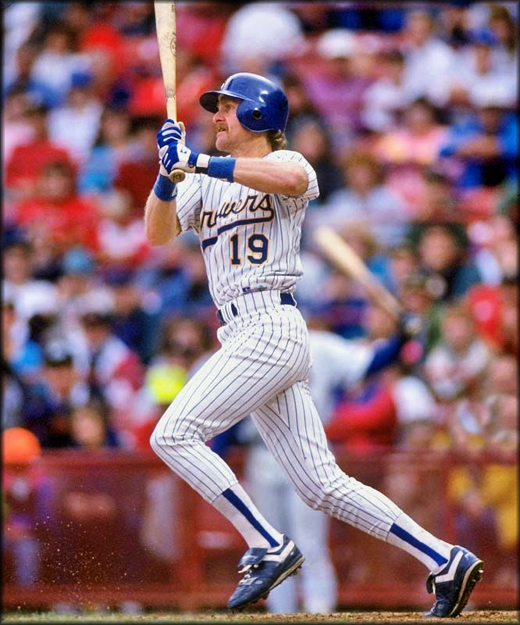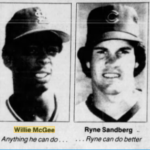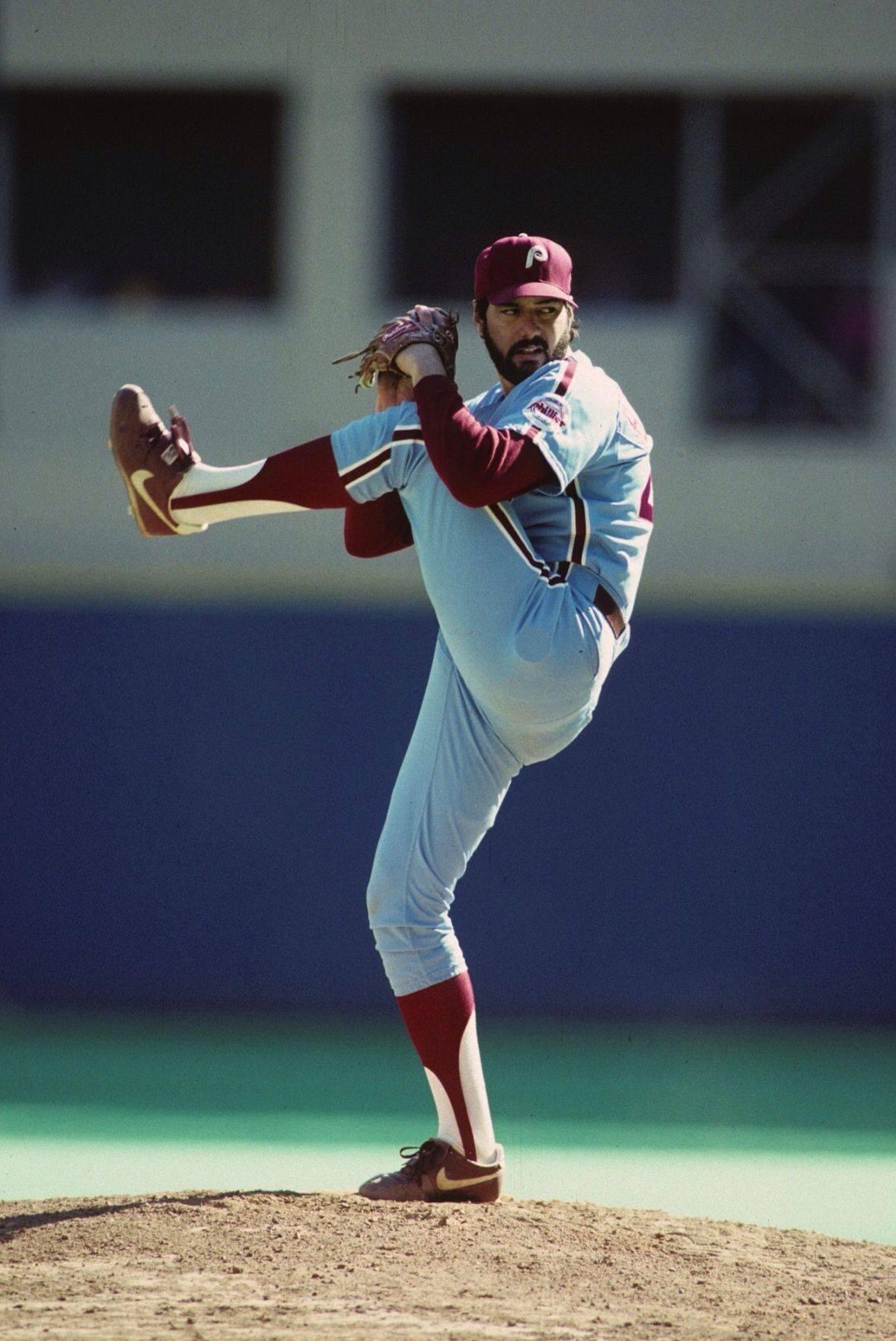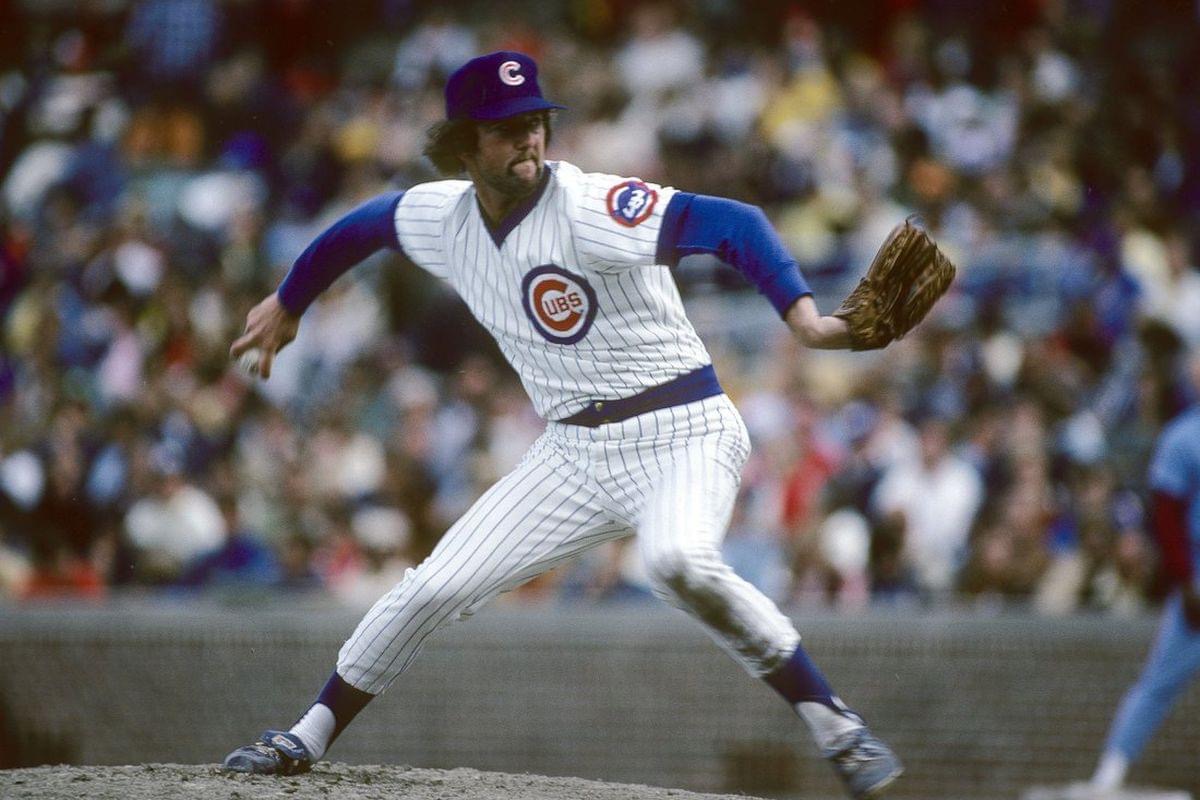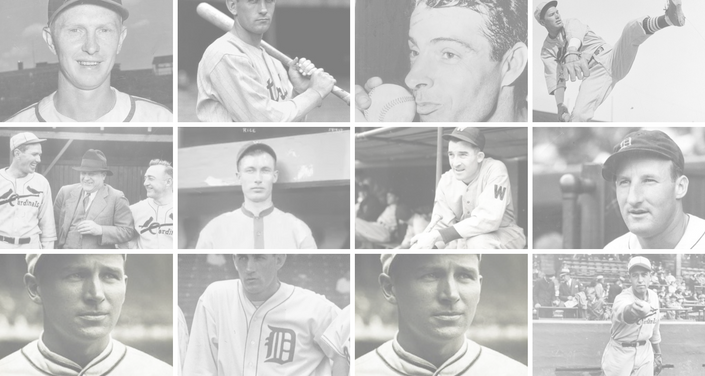[adrotate banner=”50″]
Bruce Sutter
Position: Pitcher
Bats: Right • Throws: Right
6-2, 190lb (188cm, 86kg)
Born: January 8, 1953 in Lancaster, PA us
Draft: Drafted by the Washington Senators in the 21st round of the 1970 MLB June Amateur Draft from Donegal HS (Mount Joy, PA).
High School: Donegal HS (Mount Joy, PA)
Debut: May 9, 1976
vs. CIN 1.0 IP, 2 H, 1 SO, 1 BB, 0 ER
Last Game: September 9, 1988
vs. SDP 1.0 IP, 0 H, 1 SO, 0 BB, 0 ER, Sv
Hall of Fame: Inducted as Player in 2006. (Voted by BBWAA on 400/520 ballots)
View Bruce Sutter’s Page at the Baseball Hall of Fame (plaque, photos, videos).
Full Name: Howard Bruce Sutter
Pronunciation: SUE-ter
View Player Info from the B-R Bullpen
View Player Bio from the SABR BioProject
Nine Players Who Debuted in 1976
Andre Dawson
Dale Murphy
Willie Wilson
Garry Templeton
Dennis Martinez
Bruce Sutter
Rick Sutcliffe
Joaquin Andujar
Mark Fidrych
All-Time Teammate Team
Coming Soon
Vintage Baseball HOT ON EBAY
Card Collections ENDING SOON ON EBAY
MOST WANTED ROOKIE CARDS
VINTAGE SPORTS TICKETS
Baseball Hall of Famers
Notable Events and Chronology for Bruce Sutter Career
When the Washington Senators drafted 17-year-old Bruce Sutter in 1969, there were not many people who would have pegged him as a future Hall of Famer. Sure, Sutter had talent. As a senior at Donegal High School in Pennsylvania, Sutter led the high school baseball team to the county championships and the basketball team to the district championship. He was even named outstanding quarterback for his district in football. The right handed throwing Sutter had a decent fastball that caught the eye of the Senators scouts, prompting them to select him in the 21st round of the draft. However, Sutter opted for college instead, attending Old Dominion University the following year. His college career was short-lived, though, and Sutter left school to sign with the Chicago Cubs organization in September of 1971.
Sutter had just started his career in the minor leagues when injury struck. Having pitched in only two games, Sutter was sidelined with damage done to his throwing arm. He subsequently sat out the 1972 season. It was during this time when he had surgery done to help repair and strengthen his arm. The operation was kept quiet since Sutter did not want to jeopardize his career with the negative publicity that an injury to a player often brings. When he returned to the game in 1973, it was obvious to the Cubs minor league pitching coach, Fred Martin, that Sutter’s fastball had suffered as a result of his injury. Martin knew Sutter needed to develop another pitch if he had any aspirations of pitching in the big leagues. As a result, Martin worked extensively with the young righthander, teaching him how to throw the split-finger fastball. Appearing very much like a normal fastball upon release, the split-finger fastball broke dramatically as it approached home plate. The new offering soon became Sutter’s signature pitch, devastating many a batter on the hurler’s road to Cooperstown.
Sutter spent the next three years in the Cubs minor league system. It was during this time in 1974 when Sutter recorded the only two starts of his professional career. On May 9, 1976, Sutter made his major league debut against the Cincinnati Reds. During his first year, Sutter chalked up ten saves with an ERA of 2.70. It was during the ’77 season that Sutter’s career really began to take off. He had a season ERA of 1.34 and saved 31 games. Sutter was chosen for the National League All Star team for the first of five consecutive times. On September 8 1977, the Cubs faced the Montreal Expos. When Sutter entered the game in the eighth inning, he proceeded to do something that only 18 major league pitchers had ever done before. After striking out the side in the eighth, Sutter threw what is known as an immaculate inning in the ninth, fanning all three batters he faced on a total of nine pitches. Sutter and his split-finger fastball had made their mark on the game.
In 1979, Sutter reached another milestone when he recorded 37 saves for the Cubs, to tie Rollie Fingers and Clay Carroll for the National League single season record. Sutter’s achievement was recognized when he was named the Cy Young Award winner at season’s end. His dominance as a closer continued in 1980 when he again topped the National League with 28 saves. His time in a Chicago uniform had come to a close, however, and it was in 1980 that Sutter was traded to the St. Louis Cardinals for Ken Reitz, Leon Durham and Ty Waller.
Sutter’s transition to a new team did not stop his fierce momentum as a closer. He pitched three scoreless innings on April 12, 1981, recording his first save in a Cardinals uniform during his debut game. He recorded 24 more saves that year for a total of 25. It was Sutter’s third straight year in which he led the National League in saves. The following season, Sutter received one of the most coveted objects of baseball memorabilia – a World Series Ring. The St. Louis Cardinals defeated the Atlanta Braves in the National League Championship Series, with Sutter saving the pennant-clinching game. The team then went on to face the Milwaukee Brewers in the World Series. The Series went to a dramatic Game Seven, with Sutter giving the Cardinals the world championship by striking out Gorman Thomas with a high fastball for the final out. Sutter was credited with two saves in the Fall Classic.
In 1984, Sutter tied the major leagues’ single season saves record, matching the total of 45 previously compiled by Dan Quisenberry. After the 1984 season, Sutter became a free agent and was signed by the Atlanta Braves. His contract with the Braves made him the highest paid player in baseball until it was reconstructed to stretch out over several years. It was during this time that injuries began to take their toll on the 10-year veteran. Sutter’s saves total dropped dramatically in 1985 to 23. A torn rotator cuff sidelined him for most of the 1986 season and all of 1987. He returned to pitching for the Braves in 1988, but his appearances were limited and Sutter made the decision to retire in 1989.
Bruce Sutter’s dominating career as a closer had come to an end. He had been named as an All Star six times (1977-1981, 1984), and he is the only pitcher to lead the National League in saves five times (1979-1982, 1984). Over his 13 year career in the majors, Sutter pitched 1042 innings and struck out 861 batters, with a lifetime ERA of 2.84. He is currently 21st on the all-time saves list, with a total of 300.
In 2006, Sutter received the highest of all baseball honors when he was voted into the National Baseball Hall of Fame. An image of Sutter in his St. Louis Cardinal cap, sporting his trademark bushy beard, is immortalized on his Hall of Fame plaque. He is the first pitcher to have never started a game to be elected, and he was just the fourth relief pitcher ever to be so honored. In the same year, the St. Louis Cardinals retired the uniform #42, which was worn by Sutter for most of his career. The same number was worn by Jackie Robinson and was retired in Robinson’s name by all of major league baseball in 1997.
Bruce Sutter currently resides near Atlanta, Georgia with his wife Jaime. The couple has three sons, Josh, Chad, and Ben. Of the three, Chad has inherited some of his father’s baseball spirit and was selected by the New York Yankees as a 23rd round draft pick in 1999. Sutter regularly makes appearances at baseball and speaking events across the country. His contributions to the game of baseball helped evolve the role of closer into the one that it is today, and he will always be known as one of the greatest relief pitchers in the history of the game. His save totals were summed up best by Hank Greenwald when he said of Sutter: “Three more saves and he ties John the Baptist.”
@ET-DC@eyJkeW5hbWljIjp0cnVlLCJjb250ZW50IjoicG9zdF90YWdzIiwic2V0dGluZ3MiOnsiYmVmb3JlIjoiTGVhcm4gTW9yZSBhYm91dCB0aGUgdGVhbXMsIHBsYXllcnMsIGJhbGwgcGFya3MgYW5kIGV2ZW50cyB0aGF0IGhhcHBlbmVkIG9uIHRoaXMgZGF0ZSBpbiBoaXN0b3J5IC0gLSAtIC0gLSAtIC0gIiwiYWZ0ZXIiOiIiLCJsaW5rX3RvX3Rlcm1fcGFnZSI6Im9uIiwic2VwYXJhdG9yIjoiIHwgIiwiY2F0ZWdvcnlfdHlwZSI6InBvc3RfdGFnIn19@
Vintage Baseball HOT ON EBAY
Card Collections ENDING SOON ON EBAY
MOST WANTED ROOKIE CARDS
VINTAGE SPORTS TICKETS
Baseball Hall of Famers
Factoids, Quotes, Milestones and Odd Facts
Played For
Chicago Cubs (1976-1980)
St. Louis Cardinals (1981-1984)
Atlanta Braves (1985-1988)
Similar: No one.
Linked: Sutter has been vocal in his support of Goose Gossage for the Hall of Fame… A fan of the game in retirement, Sutter has praised Yankees closer Mariano Rivera.
Best Season, 1977
In 62 games, Sutter averaged more than two innings per outing, posting a 1.34 ERA. He saved 31 games and surrendered just 69 hits in 107 1/3 IP. His 1984 season was also very, very good.
Awards and Honors
1979 NL Cy Young
1979 NL Rolaids Relief
1981 NL Rolaids Relief
1982 NL Rolaids Relief
1984 NL Rolaids Relief
Post-Season Appearances
1982 National League Championship Series
1982 World Series
Description
Sutter was a tall, lanky pitcher, with long arms and long fingers, which was one of the reasons he could throw the split-fingered fastball so well. He often wore a beard, though he shaved it in Chicago because the Cubs had a policy forbidding facial hair.
Factoid
In one 39-day period in 1984, Bruce Sutter had more two-inning saves (nine) than Trevor Hoffman had in his entire career, and as many as Mariano Rivera had in his career.
Where He Played: Sutter became the first pitcher to be elected to the Hall of Fame who had never started at least one game in the big leagues.
His Arsenal: The Pitches He Threw
Sutter helped make the split-fingered fastball the pitch of the late 1970s and 1980s. Gripped between the index and middle fingers and thrown with a fastball motion, the ball appears to the batter as a fastball until the last few feet, when it tumbles straight down. Jack Morris and Mike Scott both had remarkable success with the pitch in the 1980s. Sutter learned the pitch from Cubs minor league pitching coach Fred Martin.
Post-Season Notes
In Game Two of the 1982 World Series, Sutter entered in the 7th inning in a 4-4 tie. He hurled 2 1/3 shutout innings and got the victory. In Game Three he pitched 2 1/3 innings and earned the save. He pitched in a losing cause in Game Five, and got the save in Game Seven.
Injuries and Explanation for Missed Playing Time
In 1972, when he suffered his arm injury in the minor leagues, Sutter paid for his own operation, hoping to keep the seriousness of the injury quiet.
Quotes From Sutter
“If Fred Martin doesn’t show me the splitter, I’m never make it to the Hall of Fame. No way. My other stuff [pitches] were just AA-ball quality.”
All-Star Selections
1977 NL
1978 NL
1979 NL
1980 NL
1981 NL
1984 NL
Best Strength as a Player
The ability to control the split-fingered fastball. He threw it in such a way that it was almost unhittable.
Largest Weakness as a Player
Sutter had a below-average major league fastball. However, since his splitter was so good, he could often throw his fastball outside of the strike zone and coax over-eager batters into chasing it. When he fanned Gorman Thomas for the final out of the 1982 World Series, Sutter threw a high fastball.
Other Resources & Links
Coming Soon
If you would like to add a link or add information for player pages, please contact us here.


